|
1/16 Scratchbuilt
Douglas TBD-1 Devastator
by Arlo Schroeder
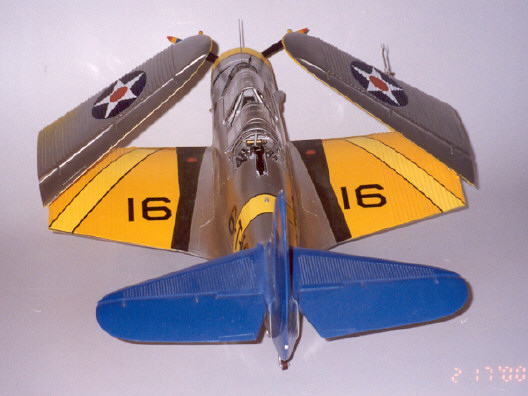 |
Douglas TBD-1 Devastator |
Text by Ben Backes

HyperScale is proudly sponsored by Squadron.com
This scratchbuilt 1/16 scale model represents TBD-1 BuNo 0346 as it appeared
during 1940 while assigned to VT-6 aboard the USS Enterprise CV-6.
Total building time was 2,880 hours.
There were not many photographs taken of this model in its early phases, so this
article focuses more on the later stages. Refer to the
1/16th Hellcat article for more details on construction techniques.
The model was painted with automotive acrylic lacquer, with the fuselage being
Corvette Silver. Some of the markings including cockpit panels are custom
dry-transfers by Woody Vondracek. Due to the complicated corrugated wings,
markings in those areas were masked off and painted. The walkways are truly
non-slip; they were cut from sandpaper. The highly polished prop blades are made
from ¼ inch aluminum sheet.
Here is how Arlo describes the process: “Blanks were cut on a band saw to
basic outline and then hand ground to final shape by removing everything that
did not look like a propeller and then polished to its final prewar luster. The
hub is made of various sizes of aluminum and brass tubing.”
Picture 1
The inner wing panels have two spars made of aluminum sandwiched in between
styrene for strength. The brass channels are supports for the landing gear.
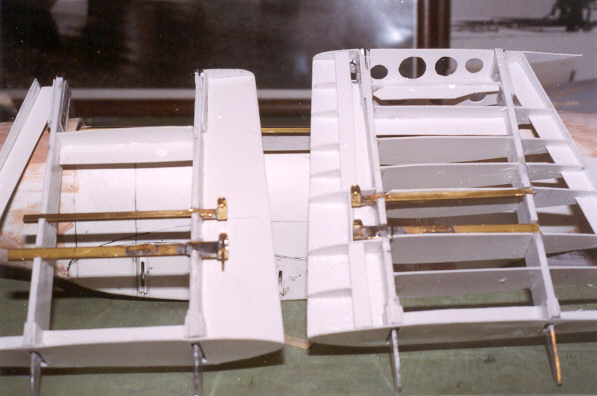
Picture 5
The landing gear is made up primarily from aluminum tubing and block aluminum
that Arlo filed by hand. The real rubber wheels were sanded down to size from
radio control wheels.
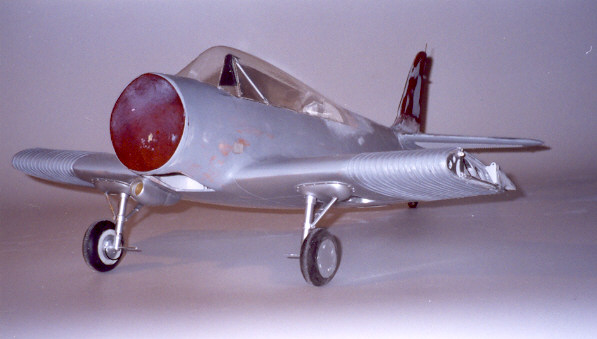
Picture 7
The control cables are taped out of the way against the fuselage sides as he
draws the reference lines for placement of the dry-transfer rivets.
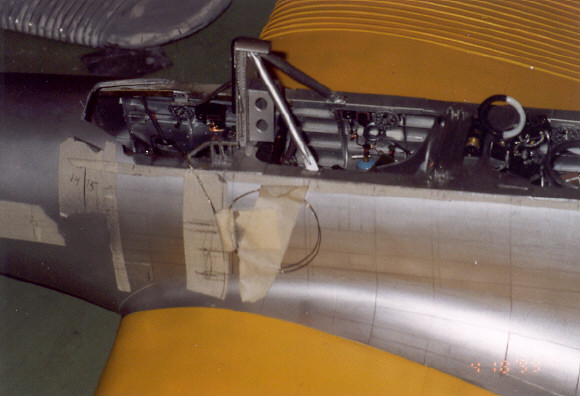
Picture 8
These are just some of the cockpit components before installation. The model has
a complete interior that includes the belly position the bombardier used in
level bombing. He crawled through a tunnel underneath the pilot’s seat. The
sighting window doors are operable. The instrument faces were from Bob Waldron.
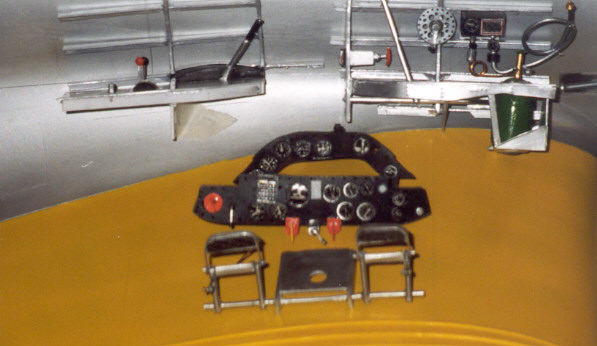
Picture 9 and 10
The engine is a Pratt & Whitney R-1830-64. Cylinders and crankcase are cast
resin from the masters I am holding.
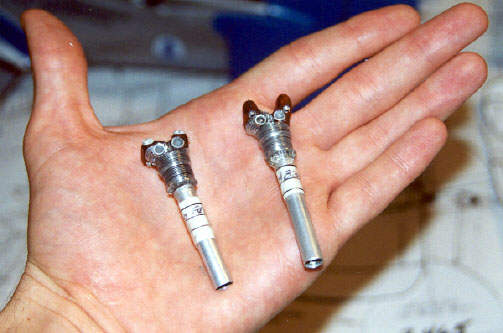
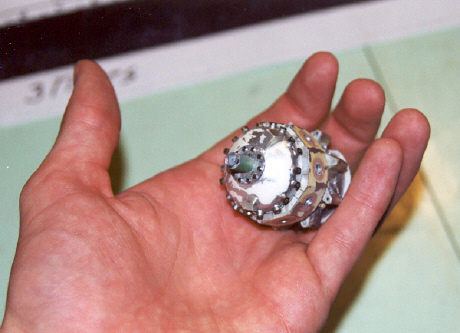
Picture 11
The completed engine added to the fuselage. The greenhouse canopies are
vacuum-formed 1/16-inch plexi-glass over polyester pattern. The framing is made
from solder coated tin from the walls of a can of paint thinner.
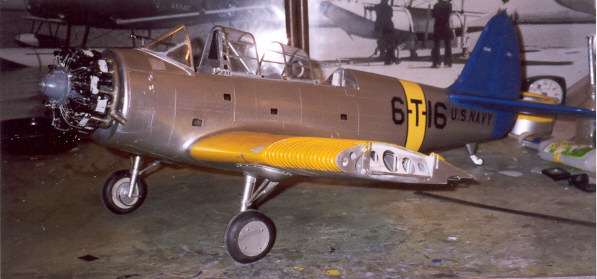
Picture 13
The flaps operate and are spring-loaded. They must be propped open or watch your
fingers!
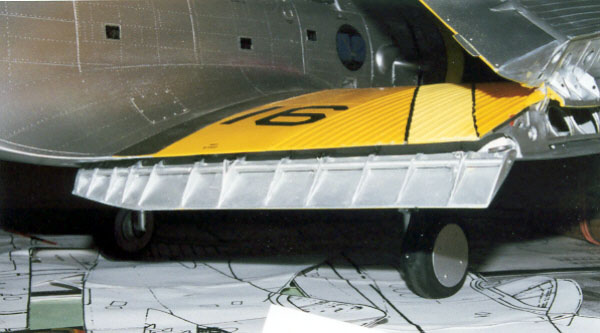
Picture 14 and 15
The sighting window doors open and closed.
[../photogallery/photo15709/real.htm]
Picture 17-24
These are all various views of the completed model. In picture 21 I am playing
with the gun position.
[../photogallery/photo25028/real.htm]
Click on the thumbnails to
enlarge.
Use your browser's "Back" arrow key to return to this page.
[../photogallery/photo6019/real.htm]
Model and Images Copyright © 2001 by
Arlo Schroeder
Article Text Copyright © 2001 by Ben
Backes
Page Created 18 August 2001
Last updated 04 June 2007
Back to HyperScale Main Page
Back to Features Page |
Home
| What's New |
Features |
Gallery |
Reviews |
Reference |
Forum |
Search